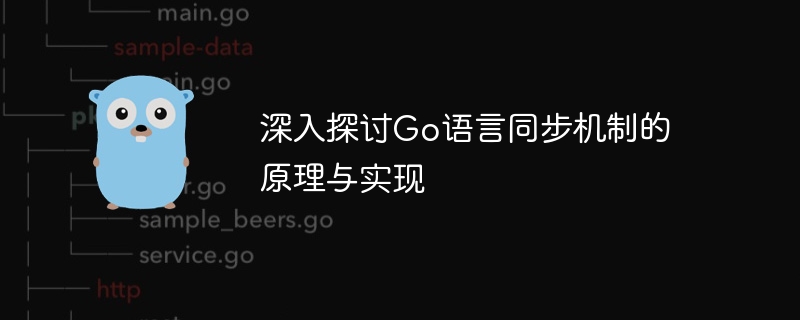

Go language, as a concurrent programming-oriented language, introduces features such as goroutine, channel, and select statements into its synchronization mechanism design, making concurrent programming easier and more efficient. This article will deeply explore the principles and implementation of the Go language synchronization mechanism, and explain it with specific code examples.
In the Go language, goroutine is the concept of lightweight threads, managed by the Go runtime. Through goroutine, concurrent programming can be easily implemented. The following is a simple goroutine example:
package main
import (
"fmt"
"time"
)
func hello() {
fmt.Println("Hello, goroutine!")
}
func main() {
go hello()
time.Sleep(1 * time.Second)
fmt.Println("Main function")
} In the above code, a goroutine is created to execute the hello() function by go hello(), and #fmt.Println("Main function") in the ##main function will be executed after the goroutine is executed.
package main
import (
"fmt"
)
func sum(s []int, c chan int) {
sum := 0
for _, v := range s {
sum += v
}
c <- sum
}
func main() {
s := []int{1, 2, 3, 4, 5}
c := make(chan int)
go sum(s[:len(s)/2], c)
go sum(s[len(s)/2:], c)
x, y := <-c, <-c
fmt.Println(x, y, x+y)
}make(chan int), sum() function Send the sum of the first half and the second half of the slice s to the channel, and the main function passes x, y := <-c, <- cReceive data from the channel and calculate the sum.
package main
import (
"fmt"
"time"
)
func main() {
c1 := make(chan string)
c2 := make(chan string)
go func() {
time.Sleep(1 * time.Second)
c1 <- "One"
}()
go func() {
time.Sleep(2 * time.Second)
c2 <- "Two"
}()
for i := 0; i < 2; i++ {
select {
case msg1 := <-c1:
fmt.Println("Received", msg1)
case msg2 := <-c2:
fmt.Println("Received", msg2)
}
}
}c1 and c2 Make a selection and print the appropriate message.
The above is the detailed content of In-depth discussion of the principles and implementation of Go language synchronization mechanism. For more information, please follow other related articles on the PHP Chinese website!
 Usage of Type keyword in Go
Usage of Type keyword in Go
 How to implement linked list in go
How to implement linked list in go
 What are the Go language programming software?
What are the Go language programming software?
 How to learn go language from 0 basics
How to learn go language from 0 basics
 What are the methods to implement operator overloading in Go language?
What are the methods to implement operator overloading in Go language?
 What are the operators in Go language?
What are the operators in Go language?
 What is the principle and mechanism of dubbo
What is the principle and mechanism of dubbo
 Java performs forced type conversion
Java performs forced type conversion
 How to delete index in mysql
How to delete index in mysql




